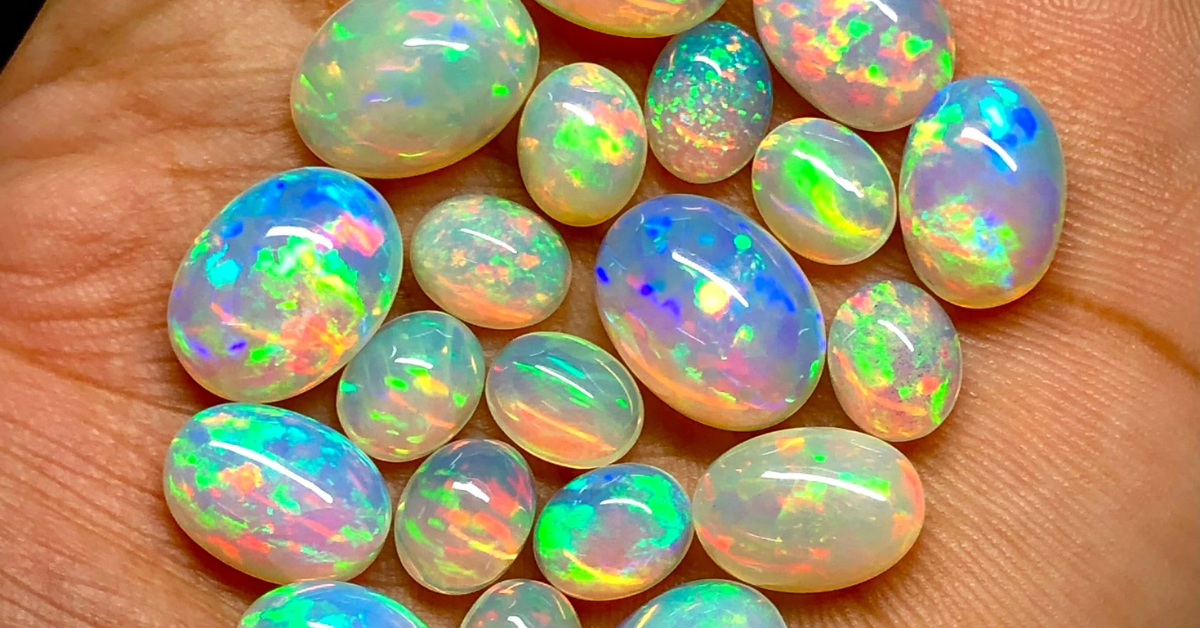Opal — with its kaleidoscope of shimmering colours — has fascinated people for centuries. From fiery reds to ocean blues, opal stones seem almost magical. But have you ever wondered if something that beautiful can be made by humans? With the rise of lab-grown gemstones, many people are asking: Can opal be man made? And more importantly — should it be?
In this guide, we’ll explore how opal forms, how scientists have learned to recreate it, and whether synthetic opals are worth your time and money. Let’s dive in!
What Is Opal?
Opal is a hydrated form of silica, made up of tiny silica spheres that trap and diffract light — creating that famous “play of colour” effect. It’s unique because no two opals ever look the same. Their shifting colours come from the way those microscopic spheres are packed, causing rainbows of light to reflect differently from every angle.
There are two main types of opal:
-
Precious Opal: Known for its vibrant flashes of colour.
-
Common Opal: Opaque or milky, without the rainbow sheen.
Opal is also the birthstone for October, symbolising creativity, hope, and truth.
How Is Opal Formed?
Natural opal forms slowly — very slowly. It takes millions of years for water carrying dissolved silica to seep into cracks and voids in the Earth’s rocks. As the water evaporates, it leaves behind silica deposits that eventually harden into opal.
Most opal comes from Australia, which produces around 90% of the world’s supply, according to the Gemological Institute of America (GIA). Other countries like Ethiopia, Mexico, and Brazil also have deposits, but their opals often differ in colour and stability.
This natural process is delicate and unpredictable, making each opal truly one of a kind — and sometimes, quite expensive.
Can Precious Stones Be Man Made?
Yes — and they have been for decades.
Gemstones like diamonds, sapphires, rubies, and emeralds can all be made in laboratories. These synthetic versions are chemically identical to their natural counterparts, though they’re often more affordable and eco-friendly.
In fact, according to a 2023 report by Allied Market Research, the lab-grown gemstone market is projected to reach over $49 billion by 2030, driven by rising consumer interest in sustainable alternatives.
So it’s no surprise that opals have joined that list.
Can Opal Be Man Made?
Yes — opal can be man made, and synthetic opal has been around since the 1970s.
Scientists discovered how to mimic the natural process by growing opals in controlled laboratory settings using silica particles and polymer binders. The result? Stunning stones that look almost identical to natural opal — sometimes even more colourful!
These lab-created opals have the same structure as real ones, including the signature play of colour. However, they’re usually more uniform, meaning the pattern of colour looks a bit too perfect compared to the random beauty of natural opal.
There are two main types of man-made opal:
-
Synthetic Opal: Grown in labs using the same chemical composition as natural opal.
-
Imitation Opal: Made from glass or resin, designed to look like opal but not share its internal structure.
If you’re buying, make sure you know which one you’re getting — real synthetic opal can be beautiful and durable, but imitations often lack quality.
Should Opal Be Man Made?
This depends on what you value most — authenticity, affordability, or sustainability.
Natural opals are undeniably special. Each one tells a geological story that took millions of years to unfold. For collectors or sentimental jewellery lovers, that uniqueness is priceless.
However, lab-grown opals have their own appeal:
-
Eco-friendly: Mining has environmental costs. Lab-grown stones reduce that impact.
-
Affordable: Synthetic opals can be up to 70% cheaper than natural ones.
-
Beautiful: They have vibrant, consistent colours ideal for jewellery design.
So, should opal be man made? Maybe not instead of natural opal — but definitely alongside it. Synthetic opals make it possible for more people to enjoy this gem’s beauty without breaking the bank or harming the environment.
If you want a meaningful piece with geological history, go natural. But if you’re after affordability and sustainability, man-made opal is an excellent choice.
Conclusion
So, can opal be man made? Absolutely — and it’s a fascinating example of how science and art meet. Whether you choose natural or synthetic, both offer incredible beauty and value.
Natural opals carry millions of years of history, while lab-grown opals showcase human innovation and care for the planet. The best choice depends on you — your values, your budget, and what kind of story you want your jewellery to tell.
Whichever you choose, opal remains one of nature’s (and now science’s) most breathtaking creations.
FAQ’S
Is synthetic opal real opal?
Yes. Synthetic opal has the same chemical structure as natural opal — it’s just grown in a lab instead of underground.
How can I tell if an opal is man made?
Lab-grown opals tend to have a more uniform pattern of colour, while natural opals have irregular and unique flashes. A jeweller or gemologist can confirm with testing.
Are synthetic opals durable?
Yes, most lab-grown opals are durable and often less brittle than natural ones, making them ideal for everyday wear.
Do lab-grown opals lose their colour over time?
High-quality synthetic opals retain their brilliance for decades, though cheap imitations made from plastic or resin can fade.
Where can I buy genuine opal jewellery?
Trusted jewellers, certified gem dealers, and reputable online stores like Blue Nile, Brilliant Earth, and Gemporia offer both natural and lab-created opal stones.
